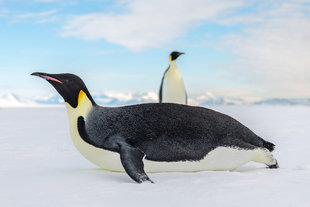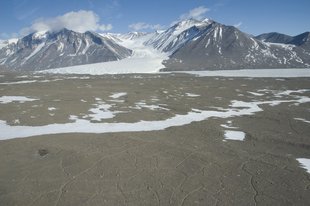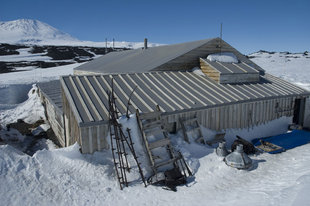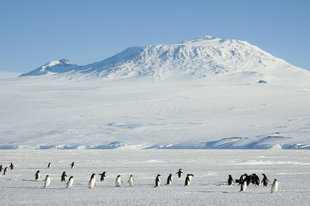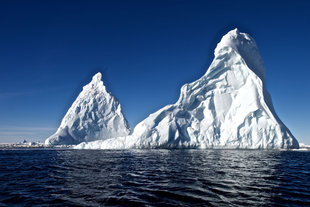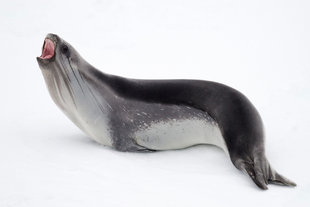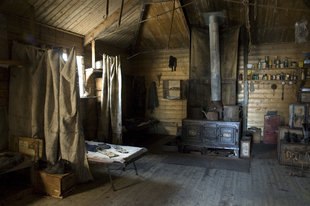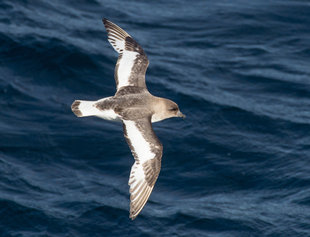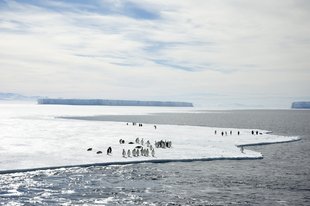The Semi-circumnavigation of Antarctica is one of the longest and most pioneering voyages we offer and in our opinion is the ultimate in Antarctic exploration. This 33 day voyage between New Zealand and Argentina (or vice versa) is onboard a beautiful purpose built, ice strengthened ship carrying just 133 passengers.
Follow in the footsteps of explorers such as Scott, Ross, Amundsen and Shackleton and embark on a journey very few people on this planet have made.
Sub Antarctic Islands such as Campbell and Macquarie Islands are some of the first of such wonders, rising from the Southern Ocean and refuge to millions of breeding seabirds and four species of penguin! This incredible journey hopes to bring you into contact with Antarctica's most impressive wildlife: Chinstrap, Gentoo, Adelie, Southern Rockhopper, Cape and possibly Emperor penguins.
Sailing beyond the Antarctic Circle will uncover the wonders of the Ross Sea before reaching the magnificent scenery and wildlife of the Antarctic Peninsula. There will be opportunities to see orcas and minke whales as well as leopard seals, elephant seals and New Zealand fur seals, which can be observed from the ship, resting upon ice-floes.
Birdlife will be plentiful and aside from penguins you may observe south polar skuas, kelp gulls, imperial cormorants (the striking blue-eyed shag), southern fulmars and fulmar petrels.
The Ross Ice Shelf (named in honour of Captain Sir James Clark Ross who discovered it in 1841) is the largest ice sheet in the world, covering an area the size of France and measuring several hundred metres in thickness. Its ice front is more than 600 km long, rising between 15 and 50 metres high above the sea surface.
On Ross Island you may have the opportunity to visit the huts of some of the greatest polar explorers in history and gain an insight into their courageous expeditions of over a century ago.
Unlike the polar explorers which came before, your pioneering voyage will be taken in comfort. Your ship boasts state of the art Ulstein x-bow technology, is fully stabilised and strong enough to comfortably navigate through solid ice and loose pack ice. She boasts an extensive range of staterooms elegant public areas including a citizen Science Center, Lounge Library and Observation Lounge . Although the philosophy is very much expedition, facilities such as a gym, sauna and Jacuzzi are much welcomed when on a 33 day passage.
While enjoying the luxurious amenities onboard, you can rest assured that our aim to get you off the ship to explore the natural environment as much as possible.
Overall, this voyage provides chances for excellent wildlife and marine life observations in comfort: exploring on land, from the strong but nimble zodiacs or from the mother ship herself. A once in a lifetime Expedition Voyage of epic proportions.
| Note that this expedition is not supported by onboard Helicopters. |
Itinerary
Semi-Circumnavigation & Ross Sea Voyage 34 Day Itinerary
Example Itinerary
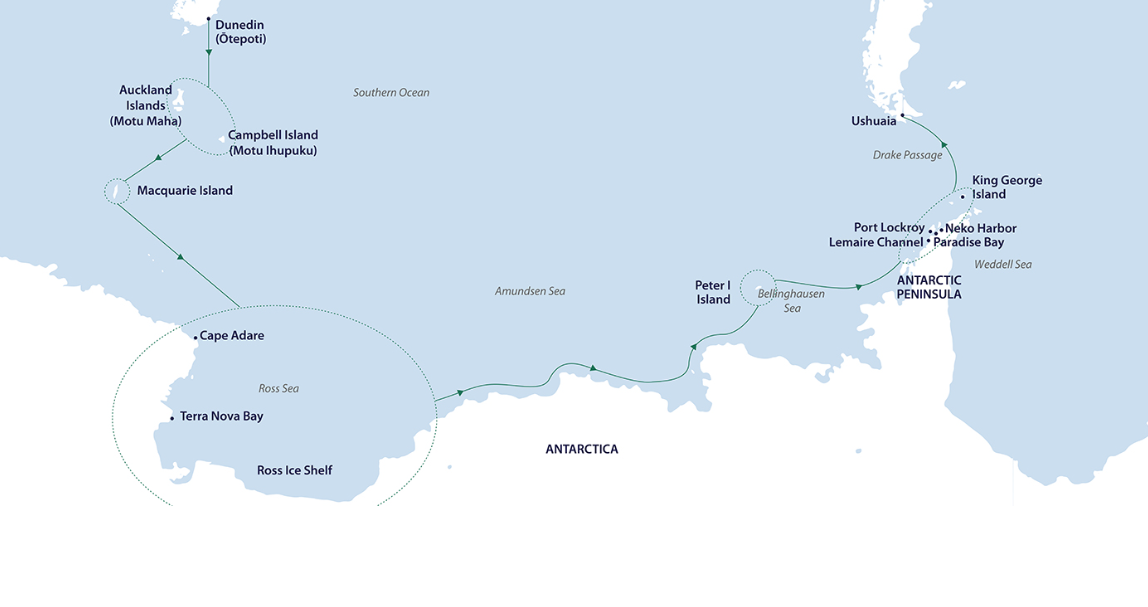
Day 1: Arrive Dunedin
Arrive in Dunedin, where you will be met by a representative and transferred with your fellow expeditioners to your assigned pre-voyage hotel. If you are already in Dunedin, we ask you to make your way to your hotel. This afternoon, visit the hospitality desk in the lobby to collect your luggage tags. Please clearly label the tags with your name and ship cabin number. Our team will confirm details regarding your embarkation day, answer any questions and provide you with information on where to dine or purchase last minute items.
This evening, you may like to indulge in a meal at one of Dunedin’s fine restaurants, or perhaps enjoy a leisurely stroll along the picturesque Otago harbour.
Day 2: Embarkation
This morning, enjoy breakfast and check-out. Please ensure your cabin luggage is fitted with cabin tags clearly labelled with your name and cabin number. By 11.00 am, take your cabin luggage to hotel reception, prior to, or at check-out. Your luggage will be stored and transferred directly to the port for clearance, to be placed in your cabin ahead of your arrival on board. Please keep any valuables or personal items with you throughout the day.
Your morning is at leisure to explore Dunedin.
Settle into your cabin, where each detail was designed with your comfort in mind. This luxurious vessel is yours to explore! As we throw the lines and set sail, join your expedition team on deck before tucking into a delicious dinner, and toast to the voyage ahead.
Day 3: At Sea
On an expedition such as this, the journey is as significant as the destination. Sea days are a wonderful opportunity to relax, meet your fellow travellers and learn about the history, environment and local wildlife in this fascinating corner of the globe.
As you acclimatise to life on board, your expedition team is available to answer any questions you may have and offer pro-tips on photography and birdwatching. With decades of collective experience in the region, they love to share their expertise and enthusiasm with fellow travellers. Join them in the lecture room for entertaining talks and presentations to enrich your understanding of the wildlife, landscapes and historic sites we hope to encounter.
You may like to pamper yourself with a sauna, a visit to the Wellness Centre, or work out at the onboard gym. While away the hours spotting seabirds on deck, curl up with a book in our well-equipped polar library, or chat with your fellow expeditioners at the bar.
Day 4-6: New Zealand's Subantarctic Islands
First visited by Māori navigators centuries ago, The Aukland Islands are of great significance to Ngāi Tahu, the indigenous peoples of New Zealand’s South Island. Their natural beauty and astonishing biodiversity have now been recognised globally, but few have had the privilege to visit these far-flung shores, which are now yours to explore.
Auckland Islands (Maungahuka / Motu Maha)
Born of fire, scoured by ancient glaciers and shaped by the fierce hand of the Southern Ocean, there is an exquisite ruggedness to this group of weather-worn islands. This apparent bleakness belies the extraordinary abundance of life that thrives here. Roughly half of the world’s yellow-eyed penguins (hoiho), most of the world’s white-capped mollymawks, and the entire population of Auckland Islands wandering albatross find shelter on these shores.
Embrace the spirit of exploration as your expedition team designs your voyage from day to day, bringing decades of experience to selecting ideal sites based on the prevailing conditions and wildlife opportunities.
Some places we may visit include:
Sandy Bay
Sandy Bay is home to a breeding colony of rare New Zealand (Hooker’s) sea lions and an enchanting rātā forest where yellow-eyed penguins (hoiho) make their nests.
Carnley Harbour offers superb Zodiac cruising through a landscape rich in human history. In 1864, five men became stranded here after their schooner, the Grafton, was wrecked, putting a sudden end to their sealing and tin prospecting ambitions. We hope to see the skeletal remnants of the Grafton, and the moss-covered remains of the Epigwaitt Hut, where they sheltered for 20 months.
Victoria Passage
Victoria Passage is a lively channel separating Auckland Island from the mountainous Adams Island to the south. We may Zodiac cruise these scenic waters, watching for sooty shearwaters, penguins and sea-lions frolicking in the pure waters.
Campbell Island (Motu Ihupuku)
Wind and weather permitting, you will Zodiac cruise sheltered harbours and coves in search of Campbell Island snipes and teals, yellow-eyed penguins (hoiho), and New Zealand (Hooker’s) sea lions (whakahao).
You can hope to land at Beeman Cove, Perseverance Harbour, where an old meteorological station stands vigil on the windswept shoreline. Follow a boardwalk through tussock and upland tundra, then enter an otherworldly landscape where large-leaved megaherbs abound. Wonder at the Ross Lily, Campbell Island Daisy and Campbell Island carrot, whose brilliant flowers would look more at home in the tropics than these southern climes.
Continue towards the nesting grounds of majestic southern royal albatross, whose wingspans can exceed three metres (10 feet). It is truly humbling to be in the presence of these great wanderers of the southern seas. Find a spot to quietly observe these marvellous birds as they go about their daily duties, undisturbed by their human visitors.
Day 7: At Sea
As Campbell Island slips over the horizon, keep watch for Campbell, Salvins and white-capped albatross, which may follow the ship to bid us farewell as we continue south.
Join your expedition team in the lecture room to hear about the fascinating human history of Macquarie Island, and how to identify the unique and charismatic creatures we hope to see in the coming days.
Day 8 - 9: Macquarie Island
“Penguins were in thousands on the uprising cliffs, and from rookeries near and far came an incessant din . . . seabirds of many varieties gave warning of our near approach to their nests” Douglas Mawson, 1911.
As they sailed towards Antarctica, Mawson and his men encountered ‘an exquisite scene’. Macquarie Island (known affectionately as Macca) rises steeply from the Southern Ocean in a series of emerald summits: a beautifully fierce, elemental landscape teeming with life.
Keep your binoculars handy because this subantarctic refuge is home to 3.5 million breeding seabirds, including no less than four species of penguin! Alongside boisterous colonies of tuxedoed kings, charming gentoos, robust rockhoppers and endemic royal penguins, you’ll find three types of fur seals and a large proportion of the world’s elephant seals. Layer up and head out on deck to experience the sound, sight (and smell!) as you approach one of the largest concentrations of life in the Southern Ocean.
Remember to keep an eye out for Macca’s kelp forests—these remarkable underwater ecosystems are quite mesmerising as their fronds sway back and forth on the water’s surface.
In addition to being a globally recognised and protected wildlife refuge, Macquarie Island played an important role in Antarctic history. It was here, in 1911, that five men disembarked Mawson’s Aurora and established a radio relay station which would transmit the first communication from Antarctica to the outside world.
Day 10-12: At Sea
As Macquarie Island slips over the horizon, keep watch for wandering, grey-headed, black-browed and light-mantled albatross, which may follow the ship to bid you farewell as you continue south.
Close observers may notice a subtle change in the character of the sea as we cross the Antarctic Convergence. Beyond this belt where the waters of the north and south mix, the sea surface temperature drops by about 4°C (39°F), signalling our entry into the Antarctic. This transition zone is known for its nutrient-rich waters, so keep watch for porpoising penguins, flocks of fluttering Antarctic petrels, or perhaps the more solitary snow petrel.
Sea days are a great opportunity for some R & R as you digest your subantarctic experiences and prepare for the next phase of your voyage. Relax and unwind your way, perhaps meeting newfound friends at the bar, treating yourself to a sauna, or editing some images in the comfort of your cabin. And join your expedition team in the lecture room for presentations on the charismatic wildlife and extraordinary adventures that took place along the epic Antarctic coastline you are about to experience.
Day 13-18: Exploring the Ross Sea
It’s almost impossible to describe the feeling of arriving in this storied, ice-bound sector of Antarctica. Stepping outside and taking a deep breath of some of the most fresh, crisp air on earth is an experience to cherish forever.
The Ross Sea region is a globally significant wildlife sanctuary. Its nutrient-rich waters support an astonishing array of uniquely adapted Antarctic species, including Ross Sea orcas, Antarctic petrels and South Pacific Weddell seals. It is also home to Antarctica’s largest Adélie penguin colony, and many of the largest emperor penguin colonies. The unique biodiversity of the Ross Sea has been protected within the world’s largest marine protected area since 2016.
The human heritage of the Ross Sea coast is equally impressive. Since James Clark Ross discovered the region in 1841, countless expeditions have built base camps on scattered ice-free slivers of land, using them as staging posts for bold forays across the polar plateau. Many of them departed in a hurry, leaving artefacts, scientific equipment and sometimes entire huts behind. Today these sites are preserved as open-air museums and protected under the Antarctic Treaty System.
Embrace the spirit of exploration as your expedition team designs your voyage from day to day, bringing decades of experience to selecting the ideal sites based on the prevailing weather, ice conditions and wildlife opportunities.
Some places we may visit include:
Ross Ice Shelf
Find a spot on deck as we cruise perfectly cleaved ice cliffs towering some 30 metres above the crystalline waters of the Ross Sea. This is the floating edge of the largest ice shelf in Antarctica, which covers an area the size of France. Watch for elegant emperor penguins, sweet-faced Weddell seals hauled out on ice floes, and the unmistakable ‘pouf’ of an orca’s exhalation.
Franklin Island
This delightful ice-free outpost with a rookery of rambunctious Adélie penguins is well worth a visit. Stretch your legs as you stroll up a gentle incline past the colony to a high point, where panoramic views of the Ross archipelago and the ice shelf unfurl.
McMurdo Sound
Enter a realm of exquisite beauty, an otherworldly icescape set against a backdrop of gleaming glaciers, shimmering mountains, and the polar ice sheet itself. McMurdo Sound is the historic gateway to the South Pole and remains a busy working harbour today, serving as a logistics hub for the extensive scientific operations taking place at the McMurdo and Scott Research bases on Ross Island.
It is here, in this achingly barren landscape, that early explorers such as Scott and Shackleton established their base camps and struck out for the South Pole. If conditions allow, we aim to land at one (or more) of their beautifully preserved huts, many of which still stand, to dwell for a moment amongst the artefacts of a distant time and reflect on the triumphs and tragedies of those who brought them here.
Cape Washington, Terra Nova Bay
Bounded by soaring peaks and fed by immense glaciers, Terra Nova Bay supports an abundance of polar wildlife, including the rarely sighted Arnoux's Beaked Whale. Fast ice anchored to the bay’s northern shore in the shelter of Cape Washington is home to one of the largest known emperor penguin colonies.
Some 20,000 males huddle here each winter, incubating their eggs and awaiting the sun’s return. Weather and ice permitting, visit the bustling rookery to witness the delightful emperors and their fledging chicks.
Cape Hallett
The snow-capped Admiralty Mountains rise dramatically from the gravelly spit of Cape Hallett, where we hope to land. This is the site of a decommissioned scientific base and an abundance of Antarctic mosses, lichens and invertebrates, protected by the Antarctic Treaty System.
Amble across gently undulating terrain, taking care to give resting Weddell seals a wide berth. The Adélie penguin rookery here can host close to 50,000 breeding pairs, while snow petrels, Wilson’s storm petrels and South Polar skuas breed in the rocky crevices nearby.
Cape Adare
Cape Adare lies 100 km (62 miles) north of Cape Hallet, at the western entrance to the Ross Sea. A rare ice-free refuge on this icebound coastline, Cape Adare is home to Antarctica’s largest Adélie penguin colony. Ice and weather permitting, wend your way through the pack ice to land on the flat, cobbled spit where more than 250,000 breeding pairs of Adélies gather to busily breed, feed and raise their chicks in the short southern summer.
First visited by James Clark Ross in 1841, this rocky promontory played an important role in the pioneering expeditions of the Heroic Age of Antarctic exploration. It was here in 1899 that the Southern Cross expedition, led by Carsten Borchgrevink, became the first to winter over in Antarctica and establish the first human structures on the continent.
The remnants of these pioneering constructions, and thousands of artefacts scattered in their vicinity, remain virtually untouched and protected under the Antarctic Treaty System. We hope to enter Borchgrevink’s living quarters to experience the awe and imagine the perils of conducting science here, as they did, through an Antarctic winter.
Day 19-26: Crossing the International Dateline
As you reach the halfway mark of your voyage, these days at sea offer time and space to reflect on the emotions and special moments you’ve experienced so far. You may like to make some notes in a journal, reminisce with newfound friends at the bar or start editing a backlog of amazing photos.
For the next week, find your rhythm and settle into life at sea. Your expedition team will offer a daily program of educational activities, entertainment and citizen science programs, which you are welcome to attend. Join them for lectures and daily recaps of your progress, weather and trajectory. Take advantage of the many shared spaces on board: relax in the sauna, work out in the gym or grab a cuppa and peruse the library shelves as the ice shelves guarding the West Antarctic coast slide by.
There is plenty of time to enjoy the magic of the Southern Ocean and the life that calls it home - especially as you gain a day by crossing the international date line! As always, the best place on the ship is out on deck, where Antarctic prions, snow petrels and great whales await - as long as the seas permit!
As you skirt the forbidding ice cliffs guarding the Antarctic ice sheet, spare a thought for British explorer James Cook, whose historic circumnavigation of Antarctica in the late 18th century encountered nothing but treacherous ‘ice islands’ and perilous winds that threatened to blow their wooden sailboat into the sea ice. Cook left the region firm in the belief that no Antarctic continent could exist, and if it did it “that the world will derive no benefit from it”. The search for Antarctica, which had been going for hundreds of years, ground to a halt, only resuming when a merchant sailor named William Smith chanced upon the South Shetland Islands in 1819. This discovery sparked visits from the sealers, whalers and scientists who would define the earliest eras of Antarctic exploration.
Your voyage continues west past the Amundsen and Bellingshausen Seas, towards the southern extremity of the Antarctic Peninsula.
Day 27-31: Antarctic Peninsula
Sailing While on the Peninsula we generally make landings or Zodiac excursions twice a day. Rug up and join a Zodiac cruise to view spectacular ice cliffs or explore grounded icebergs, keeping an eye out for whales, seals and penguins, which frequently travel and feed in these waters. Zodiacs will also transport you from the ship to land, where you can visit penguin rookeries, discover historic sites and explore some of our favourite spots along the Peninsula.
While ashore we aim to stretch our legs, wandering along pebbly beaches or perhaps up snow-covered ridgelines to vantage points with mountains towering overhead and ice-speckled oceans below. If you have chosen an optional activity, you will have the option to do that whenever conditions allow, and of course keen polar plungers will have the chance to fully immerse themselves in polar waters - conditions permitting!
In addition to Zodiac cruises and shore excursions, we may ship cruise some of the narrow, dramatic straits separating offshore islands from the mainland, or linger in scenic bays to marvel at sculptural icebergs and photograph spectacular scenery. This is a great time to enjoy panoramic views from the observation lounge or make your way to the bridge (open at the Captain’s discretion) for uninterrupted views of Antarctica in all its splendour. Keep an ear out for the creak and deep rumble of glaciers as they break off, calving into the sea. Take a quiet moment to experience the wonder of this incredible white continent.
Day 32-33: At Sea
The South Shetland Islands is a volcanic island group around a day’s sail from the Antarctic Peninsula. We aim to land or Zodiac cruise at one of the many appealing coves, bays and beaches, with the opportunity to see chinstrap and gentoo penguin colonies, fur and elephant seals, and the historic remnants of the sealing and whaling age.
In the afternoon, begin your transit north across the Drake Passage. As your journey draws to a close, take some time to reflect on the experiences of the past few weeks. Perhaps you’d like to organise your photos, jot some more notes in your journal or simply relax and soak up the ambiance on board as you farewell your travel mates . . . until next time!
We hope you become ambassadors for the great Southern Ocean, advocating for its conservation and preservation, and share your experiences with your loved ones, so they might visit and become ambassadors themselves.
Day 34: Disembarkation In Ushuaia
During the early morning, we cruise up the Beagle Channel, before quietly slipping into dock in Ushuaia, where we will be free to disembark around 8.00 am. Farewell your expedition team and fellow passengers as we all continue our onward journeys, hopefully with a newfound sense of the immense power of nature.
Note: At the conclusion of the voyage, we do not recommend booking flights departing Ushuaia prior to 12.00 pm on the day of disembarkation in case there are delays.
Semi-Circumnavigation & Ross Sea Voyage 33 Day Itinerary
Example Itinerary
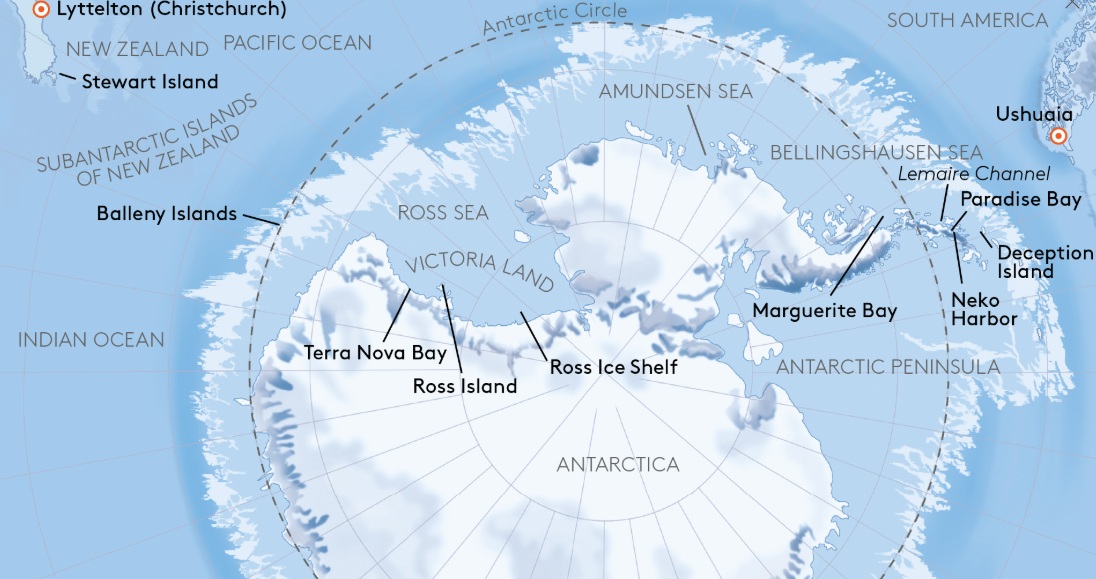
1st Feb: Fly Buenos Aires – Ushuaia
Charter flight from Buenos Aires to Ushuaia/Argentina, departure 18.00 hrs
2nd Feb: The Drake Passage
You will spend today sailing through the Drake Passage.
3rd Feb – 8th Feb: South Shetland Islands, Antarctic Peninsula, crossing the Antarctic Circle & Marguerite Bay
The semi-circumnavigation of the Antarctic is something very special for those in search of an unforgettable expedition. The captain and crew flexibly adjust the itinerary to the constantly changing conditions. Towering basalt cliffs, rugged volcanic rock and snow-covered mountains herald an impressive destination: the Antarctic Peninsula. Icebergs, glaciers and majestic mountains – populated by penguins, seals and a huge variety of seabirds.
The small, manoeuvrable expedition ship promises unique days. Numerous Zodiac rides and landings heighten the sense of discovery. Stories of pioneers are brought to life on islands, in bays and in seas with names harking back to great explorers. Whether in the footsteps of James Clark Ross, Robert Falcon Scott or Sir Ernest Shackleton – you’ll follow their pioneering spirit on your expedition.
Depending on the ice and weather conditions, you will head to Deception Island. Marvel at the extinct volcano all around you as the ship sails into the centre of the flooded caldera and takes you to the black volcanic beaches. In contrast, the white world of Neko Harbor makes for stunning images: massive glacial cliffs are reflected in the sea.
Along wonderful icy panoramas populated by Weddell and fur seals, you will head for Paradise Bay and its drifting icebergs. The feeling of exploration on board soars with each nautical mile – and with it the dimensions of the landscapes that you can watch in awe whenever you like thanks to the many open deck spaces.
Mountains up to 1,000 m (3,281 ft) high flank the narrow Lemaire Channel on one of the world’s most beautiful sea passages. Keep an eye out for Gentoo and Adelie penguins and the blue-eyed cormorants that have their breeding colonies on Petermann Island.
Other ships have long had to turn back at this point, but your ship is able to cross the Antarctic Circle and head South for more Antarctic adventures.
It is hard to imagine living in this isolation as a scientist, but the remains of a hut and a plaque at the cape of Prospect Point serve as reminders that some once did.
With the highest ice class for passenger ships, it can forge its way to the most beautiful and rarely visited regions such as Marguerite Bay and a British research station dating back to the 1960s: on Stonington Island, you will discover how skuas and Antarctic terns have taken possession of the abandoned base.
9th – 17th Feb: At Sea (Cruise through Bellingshausen Sea, Amundsen Sea and Ross Sea & Cross the International Date Line
The following days at sea will be shaped not only by fascinating expert presentations on board, but also by the golden age of Antarctic research in the Bellingshausen Sea, Amundsen Sea and Ross Sea. These seas take their names from the daring explorers who boarded their vessels many years ago to travel this remote region without modern technology, putting their lives on the line – and they may well have been just as impressed as you are by similar views.
18th – 23rd Feb: Ross Island, Terra Nova Bay & Victoria Land
It is the ideal season, the perfect timing for making your way through the pack ice and drifting ice to get to Ross Island. Will the weather and ice conditions allow you to land in legendary places such as Cape Royds? The spot where Sir Ernest Shackleton built a base camp for his South Pole expedition in 1908 is now home to penguins. Cape Evans, by contrast, set the scene for the Terra Nova expedition led by Robert Falcon Scott, who never returned from his attempt to beat Roald Amundsen to the South Pole.
The American McMurdo Station will also bring polar history to life (subject to authorisation). In the shadow of the modern building and the mighty Mount Erebus stands the Discovery hut built by Scott in 1902. A good ten years later, it also played an important part in Shackleton’s Endurance expedition as a base camp for the planned crossing of Antarctica.
Perhaps you’ll spot emperor penguins and whales in this historically significant region. Another indescribable highlight awaits as you cruise in front of the fantastic backdrop of the Ross Ice Shelf: the gigantic wall of ice as tall as houses stretches for hundreds of kilometres.
Next, Victoria Land welcomes you with an endless expanse in Terra Nova Bay, named after the ship that Scott was sailing in when he discovered the bay in 1901. The features here now include an Italian research station. In Cape Adare, you will find the ruins of a hut that Borchgrevink built in 1899 and in which an expedition team spent a winter in Antarctica for the first time.
The spectacular natural surroundings are just as moving as the region’s past – including the largest colony of Adelie penguins in Antarctica with over 250,000 breeding pairs.
24th Feb: At Sea
Today will be spent at sea.
25th Feb: Cruising off the Balleny Islands/New Zealand
As your route continues, you will come across untouched island worlds with a rich fauna that are hardly known in our latitudes. With a small circle of like-minded people, the goal is to discover these paradises and develop a special awareness and appreciation for them. Nature conservation is playing an increasingly important role in their preservation, which is why permits are becoming more and more complex. Destinations in New Zealand and Australia, for example, depend on whether the authorities grant their permission to cruise and land. If they do, you’ll enjoy mystical views of the largely glaciated Balleny Islands.
26th – 27th Feb: At Sea
These days will be spent at sea.
28th Feb - 2nd Mar: Cruising off the subantarctic islands of New Zealand
Which of New Zealand’s subantarctic islands will a landing be successful on? With a bit of luck, you will experience Campbell Island and the world’s largest breeding colony of southern royal albatrosses. The Auckland Islands have the lushest flora of all the islands – yellow-eyed penguins and New Zealand sea lions are native here. The Snares penguin, meanwhile, is only found on the Snares Islands, alongside Cape petrels and albatrosses. By making this semi-circumnavigation of the Antarctic, you will be one of the few people who have delved deep into the secrets of this remote region.
3rd Mar: Stewart Island
Peaks rising up to almost 1,000 m (3,280 ft), eight different ecosystems, 245 km (152 miles) of hiking paths: the mountainous Rakiura National Park on Stewart Island is home to age-old flora and fauna. New Zealand’s third largest island is a paradise for hiking and birdwatching with your experts. There are more kiwis than people living here, with likely chances of seeing these shy birds – maybe feeding on the beach. In the forests, you might also spot tomtits, fantails, parrots and parakeets. Silence and solitude, clean air and birdsong make the islands a special experience for all the senses. As well as the diversity of birdlife, Maori sites will also draw you under their spell. What will impress you the most? One thing is for certain: by making this semi-circumnavigation of the Antarctic, you will be one of the few people who have delved deep into the secrets of these remote regions.
4th Mar: At Sea
Today will be spent at sea.
5th Mar: Disembark in Christchurch
Lyttelton (Christchurch) /New Zealand, arrival 6.00 hrs
Dates
Dunedin - New Zealand Subantarctic Islands - Macquarie Island - Ross Sea - Antarctic Peninsula - Ushuaia (34 days)
Modern x-bow expedition ship: 154 passengers
Optional Activities: Kayaking
Includes: 1 pre-voyage hotel night & free Expedition Jacket
From price per person in a Twin Porthole share cabin
Contact Us for all cabin prices & availability
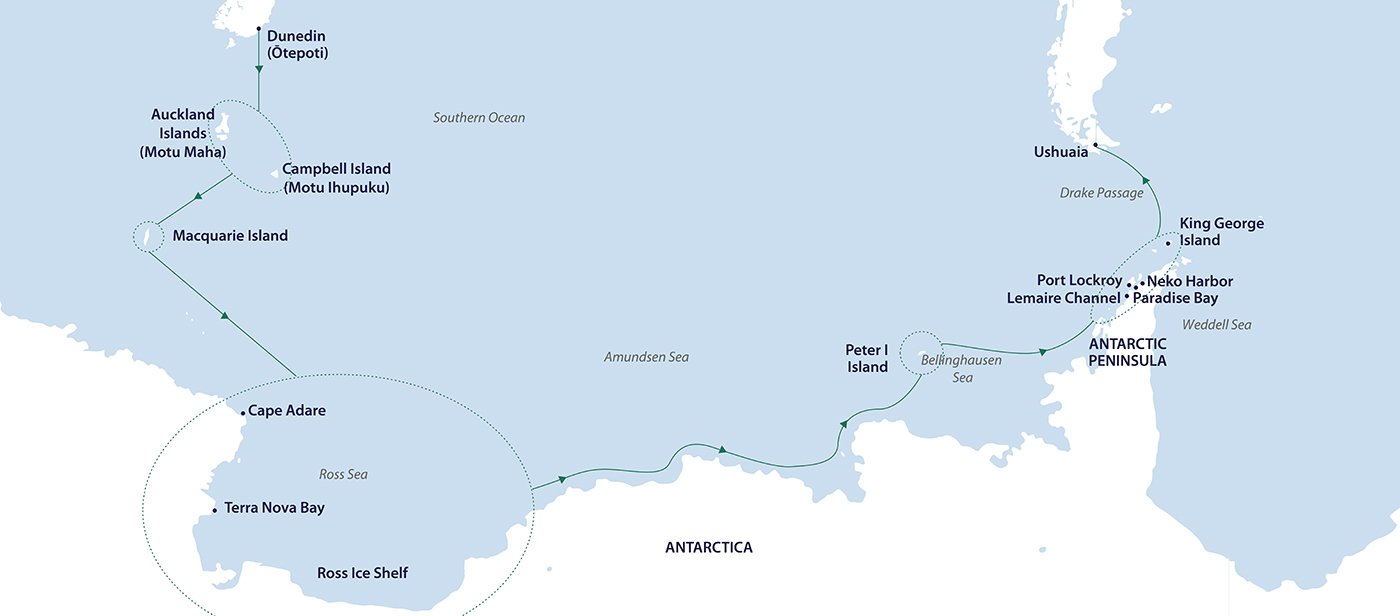
Dunedin - New Zealand Subantarctic Islands - Macquarie Island - Ross Sea - Antarctic Peninsula - Ushuaia (34 days)
Modern x-bow expedition ship: 154 passengers
Optional Activities: Kayaking
Includes: 1 pre-voyage hotel night & free Expedition Jacket
From price per person in a Triple Porthole share cabin
Contact Us for all cabin prices & availability

Ushuaia - Antarctic Peninsula - New Zealand Subantarctic Islands - Stewart Island - Lyttelton (33 days)
Comfortable ship: 199 passengers
Includes: One way charter flight
From price per person in a Twin Porthole share cabin
Contact Us for all cabin prices & availability
Price Includes:
• All airport transfers mentioned in the itinerary.
• One night’s hotel accommodation including breakfast, in Dunedin on Day 1.
• Onboard accommodation during voyage, including daily cabin service.
• All meals, snacks, tea and coffee during voyage.
• Soft drinks and juices throughout all meals.
• Beer and house wine with dinner.
• Captain’s Farewell reception including four-course dinner, house cocktails, house beer and wine, non-alcoholic beverages.
• All shore excursions and Zodiac cruises.
• Educational lectures and guiding services provided by Expedition Team.
• Complimentary access to onboard expedition doctor and medical clinic (initial consultation).
• One 3-in-1 waterproof, polar expedition jacket.
• Complimentary use of Muck Boots during the voyage.
• Comprehensive pre-departure information.
• Port surcharges, permits and landing fees.
• Wi-Fi*.
Price Excludes:
- International or domestic flights – unless specified in the itinerary.
- Transfers – unless specified in the itinerary.
- Airport arrival or departure taxes.
- Tips $15pp/day is added to your onboard account -which is voluntary and can be removed when you settle you bill.
- Passport, visa, reciprocity and vaccination fees and charges.
- Travel insurance or emergency evacuation charges.
- Hotel accommodation and meals – unless specified in the itinerary.
- Optional excursions and optional activity surcharges.
- All items of a personal nature, including but not limited to alcoholic beverages (outside of dinner service), gratuities, laundry services, personal clothing, medical expenses or phone charges.
Single supplement:
Single occupancy price is an additional 50% of the per person cabin price. However this does not apply if you are prepared to share a cabin with another passenger of the same gender.
*Fuel surcharge:
The cost of fuel is currently volatile, so a fuel surcharge may be applied by the ship without notice. We will let you know if this applies to your booking and send you an updated invoice.

